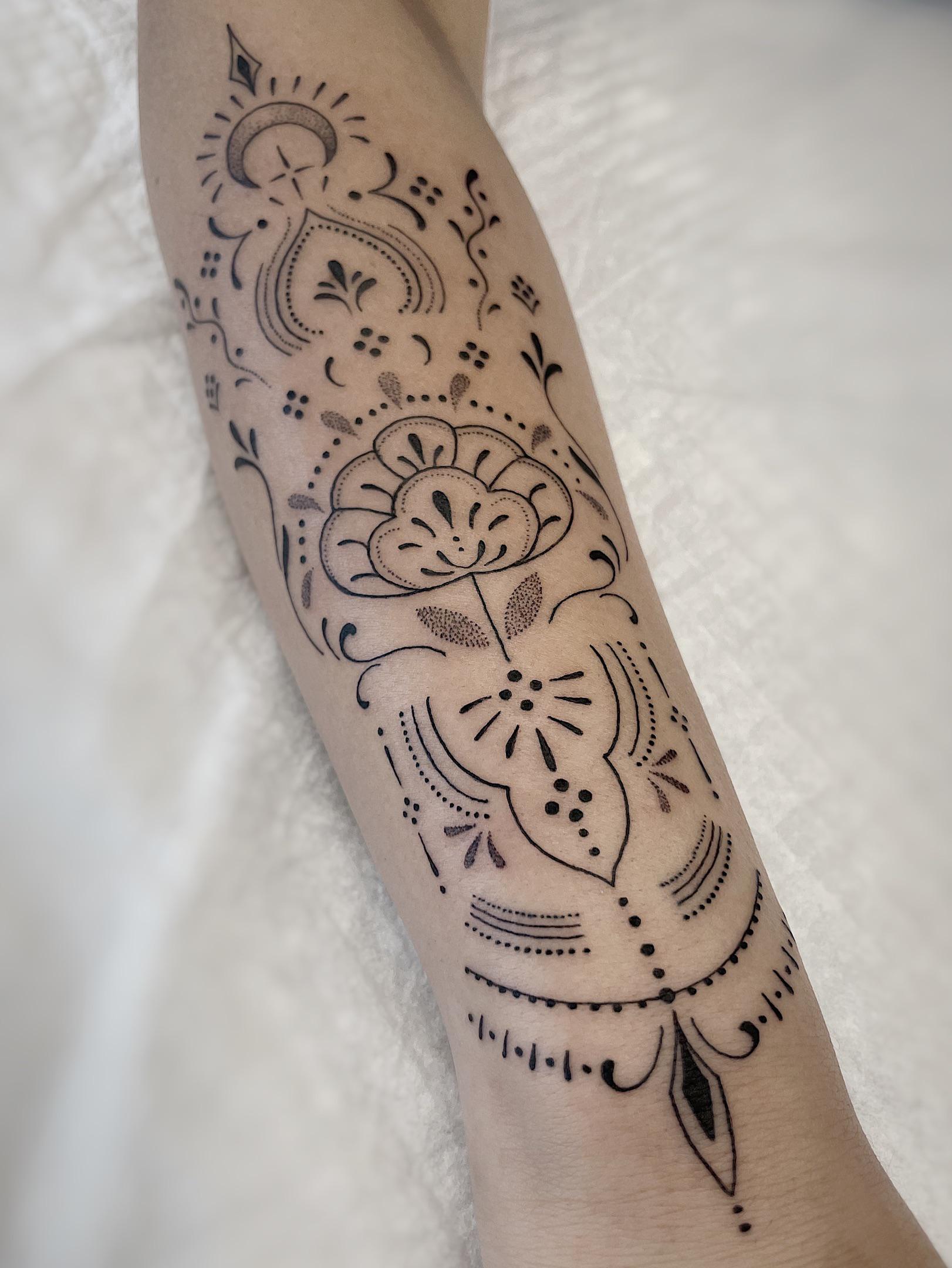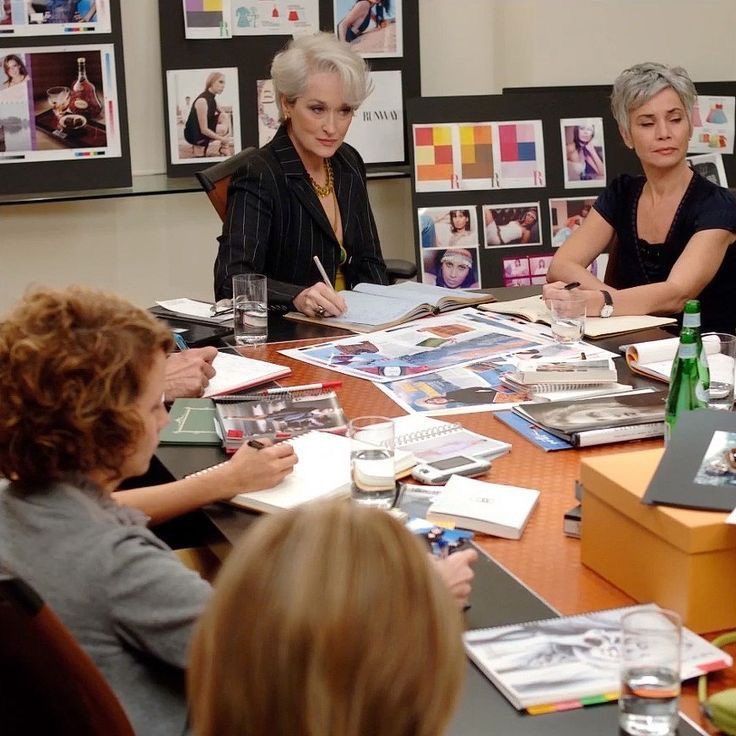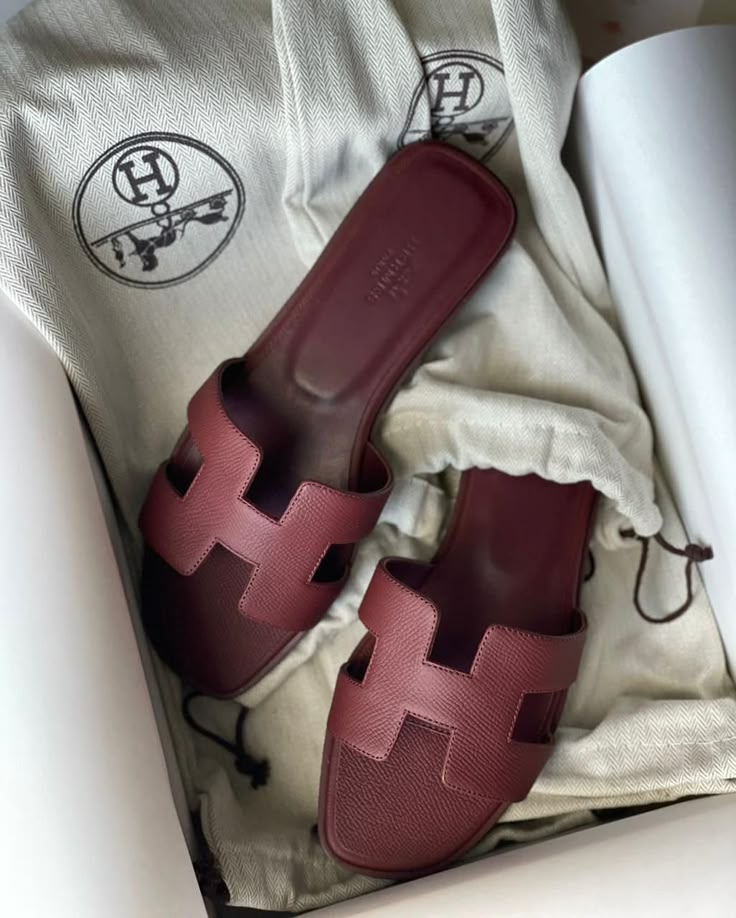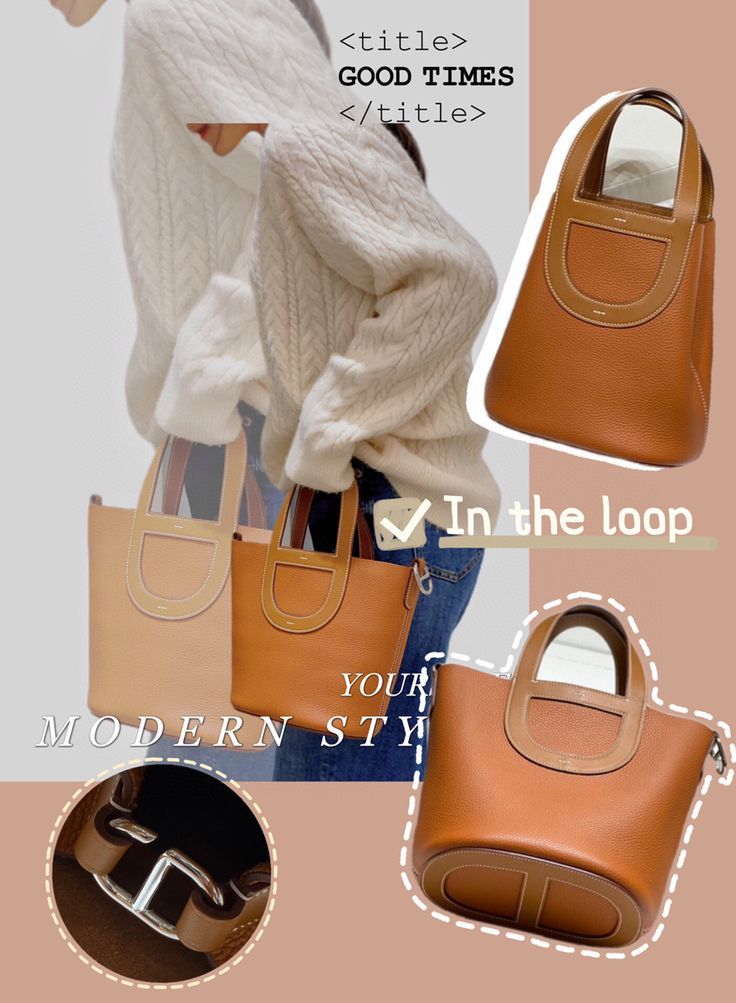Are you interested in stylish, ornamental tattoos? Our article will introduce you to captivating designs and guide you through the enchanting world of decorative ink.
A JOURNEY THROUGH HISTORY, ELEMENTS, AND MEANINGS
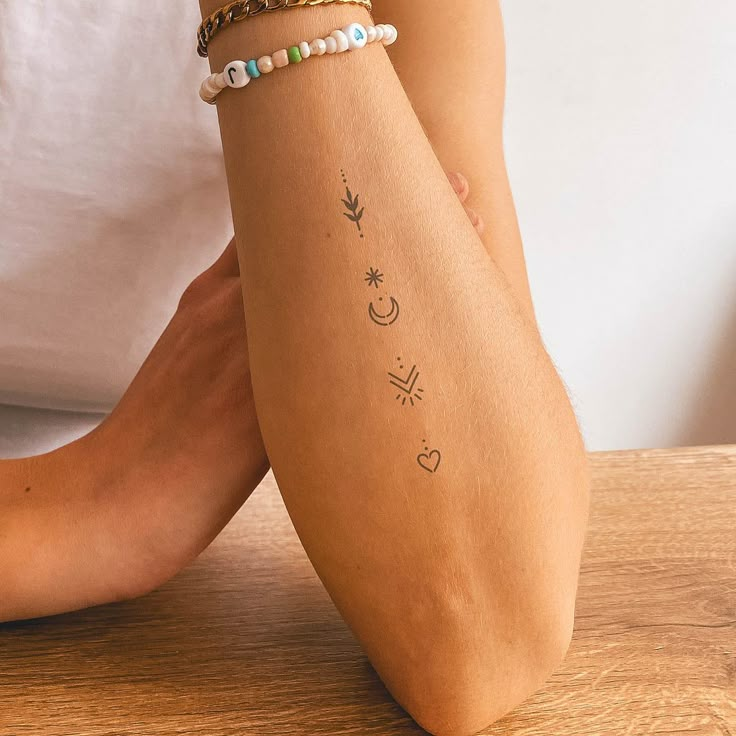
ANCIENT ORIGINS
Ornamental tattoos boast a rich and varied history across cultures and centuries. Historically, these tattoos were often used for spiritual purposes, though some were simply aesthetic embellishments. While it’s difficult to pinpoint the very first culture to create decorative patterns, intricate Polynesian tribal tattoos and delicate henna art from South Asia are among the most well-documented, with roots stretching back at least 2,000 years.
CLASSIC ELEMENTS
Ornamental tattoo designs can vary widely, but they often incorporate popular motifs such as mandalas, triangles, swirling lines, and spirals. These shapes are typically arranged in symmetrical, visually pleasing compositions. Additionally, organic elements like flowers, leaves, vines, and ornamental stars enhance the designs with natural beauty.
You might wonder how ornamental tattoos differ from geometric and tribal tattoos. While the distinctions can be subtle, we’ll clarify these differences in the section on stylistic variations.
MEANINGS
The meanings behind ornamental tattoos are diverse and versatile, allowing for a wide range of personal expression. Many ornamental tattoos symbolize vitality, spiritual connections to nature and the universe, cultural identity, or deeply personal narratives. However, it’s perfectly valid to choose an ornamental tattoo simply for its aesthetic appeal. Ultimately, ornamentalism celebrates unique beauty, and if you enjoy admiring your intricate ink in the mirror, that alone is reason enough.
As the saying goes, “It’s better to see something once than to hear about it a thousand times.” So, let’s explore our creative collection, where we categorize ornamental tattoo designs by style and placement.
STYLISTIC VARIETY OF ORNAMENTAL TATTOOING
As promised, let’s delve into the distinctions between ornamental, tribal, and geometric tattoo styles. While there are no strict definitions, tribal tattoos can be seen as a subset of ornamental designs, often featuring specific cultural origins like Celtic, Polynesian, Aztec, or Cherokee.
On the other hand, geometric tattoos stand apart, characterized by precise shapes and lines that convey a sharper aesthetic. These tattoos often emphasize structured space over the fluid patterns typical of ornamental designs, and colors are frequently incorporated into geometric tattoos.
DECORATIVE TATTOOS

Decorative tattoos feature clean, minimalistic designs, utilizing fine lines and tiny dots to create elegant pieces. Unlike tribal tattoos, they avoid large areas filled with black ink, favoring small, dispersed elements.
TRIBAL TATTOOS
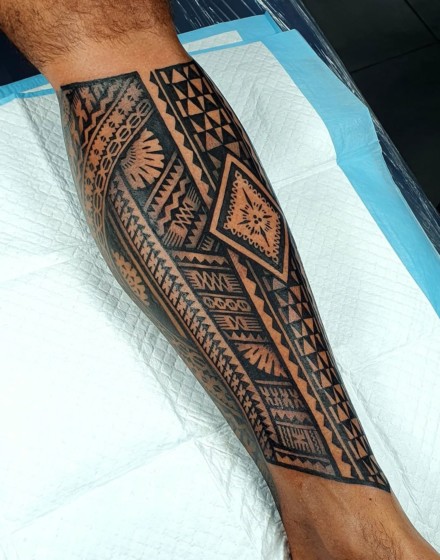
Tribal tattoos represent a branch of the ornamental style, marked by bold black lines and intricate patterns inspired by traditional art from various indigenous cultures. These tattoos often incorporate symbols and motifs of spiritual significance.
PATTERN WORK
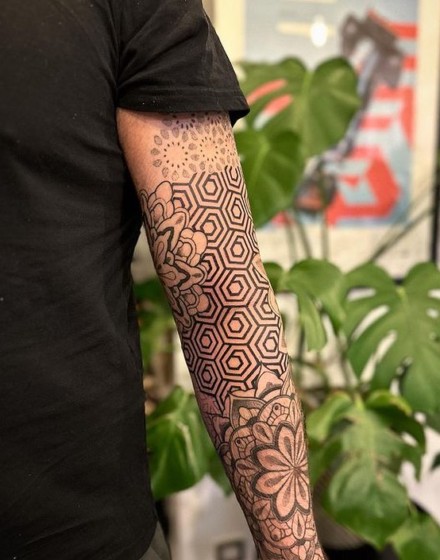
Pattern work tattoos focus on complex and intricate designs, featuring interconnected elements like swirling lines and mandalas. While decorative and pattern work tattoos may appear similar, we strive to highlight their unique characteristics in our collection.
HENNA TATTOOS

Henna tattoos, or Mehndi art, utilize a paste made from henna leaves to create temporary designs. Known for their intricate patterns featuring floral motifs and geometric shapes, henna tattoos are traditionally applied for celebrations, particularly weddings, to enhance femininity. However, they are equally suitable for men and have gained worldwide popularity for their non-permanent nature.
WHERE TO PLACE AN ORNAMENTAL TATTOO DESIGN
The size of your tattoo is entirely up to you, ranging from a small ornamental star on the shoulder to a full-body suit. However, consider these factors before choosing your tattoo placement:
PAIN LEVEL
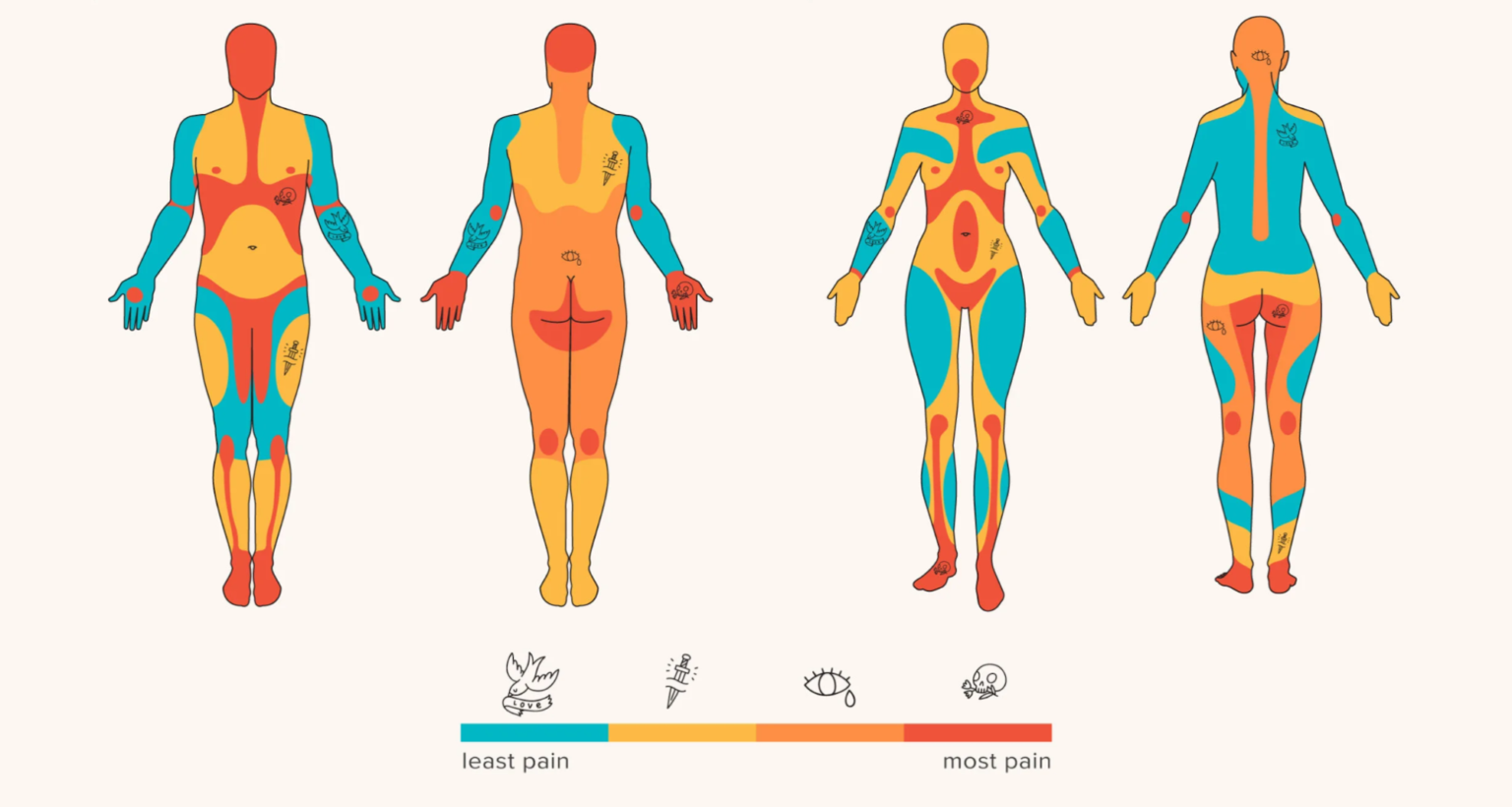
Pain levels can vary significantly depending on the location of the tattoo. For newcomers to tattooing, it’s essential to assess your pain tolerance, especially for larger pieces, as discomfort can intensify during lengthy sessions.
AMOUNT OF DETAIL
Consider how much detail you want in your tattoo. If you desire intricate designs with many connected elements, a larger placement may be advisable. Fitting numerous details into a smaller area requires a thinner needle, complicating the process and demanding greater precision.
VISIBILITY
Think about how visible you want your tattoo to be. If it’s meant for personal enjoyment, you might prefer a less conspicuous location. Keep in mind that highly visible areas, like wrists and fingers, may not hold ink as well due to constant friction.
With these considerations in mind, we invite you to explore how ornamental tattoos look across different body locations.
HOW TO COMBINE ORNAMENTS WITH OTHER TATTOO STYLES
Mixing tattoo styles is common, offering a wealth of artistic possibilities and a chance to create one-of-a-kind designs. While ornamental tattoos traditionally lean toward a more reserved palette, blending styles can yield stunning results. We’ve curated six beautiful tattoos that combine floral themes, realistic details, dotwork techniques, and vibrant colors with ornamental elements.
CONCLUSION
Elegance and timelessness define ornamental tattoos. For centuries, these intricate designs have conveyed deep spiritual and religious meanings. Today, a delicate ornamental tattoo can carry a unique message or serve as a beautiful aesthetic detail on your body.
We’ve gathered over 50 ornamental tattoo designs in one article to showcase the diverse branches of this style, including popular tribal and henna tattoos. Whether you’re seeking inspiration for your first tattoo or your next piece, we hope you find our collection engaging and inspiring!

